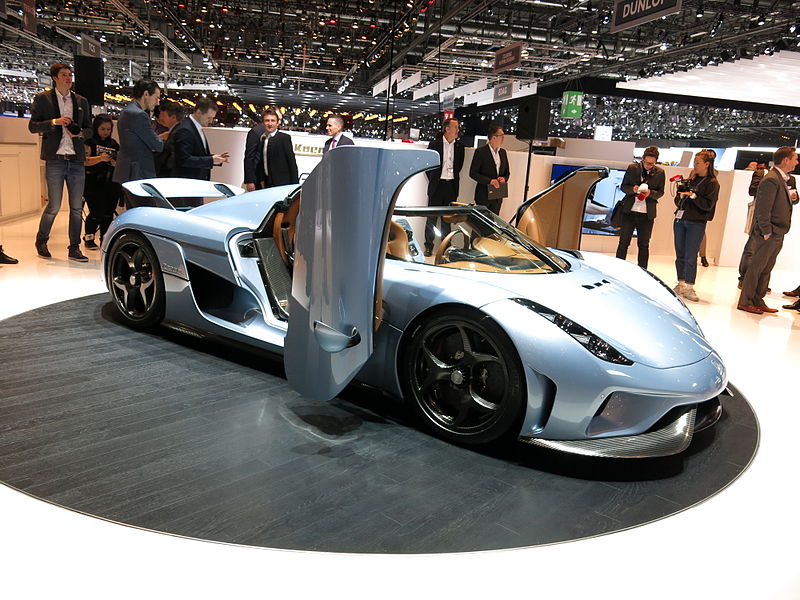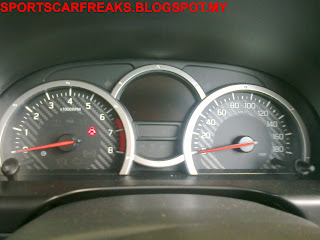On a hot Sunday afternoon not knowing what to do, I decided to go out for a test drive, which brought me to Honda Showroom in Bangi just across from Warta. Test drive what car I heard you asking. Well, it is the car in the above picture, the Honda HRV (Hi-rider Revolutionary Vehicle), a compact SUV smaller than the CRV. Is it really worth the test drive? You bet it is because the HRV made this writer go 'wow' in a delightful way. How so? Read further to find out.
As usual we will begin with the nitty-gritty. The HRV is available with 3 trim levels, starting with the entry-level S variant, followed by the mid-range E variant and finally ending with the range-topping V variant.
The pricing is as followed: RM98,689.80 (S variant), RM108,026.50 (E variant) and RM118,228.50 (V variant), all with insurance and inclusive GST.
Throw in the optional Honda Genuine Accessory and you will be treated to Modulo Exterior Accessories and Utility Package. The Exterior Accessories is made up of Sport Aero Package (Front and Rear Aero Bumper, Side Under Spoiler and Door Mirror Garnish for RM3,928.20 inclusive GST) and Tough Advance Package (Front and Rear Lower Garnish, Front and Rear Bumper Garnish and Running Board for RM3731.30 inclusive GST).
The Utility Package includes Smart Utility Package (Auto Dim Rear View Mirror, Trunk Tray, Cargo Step Protector and Trunk Organiser for RM1,622.40 inclusive GST) and Urbane Utility Package (Door Visor, Front Foot Light, Illuminated Side Step and Sports Pedal for RM1,532.30 inclusive GST).
Not related to the Modulo package is the CSE CONNEX SVR, which is an advanced security system that safeguard your vehicle's safety that includes 24/7 Secure Operating Centre (SOC) service that takes care of theft alerts, theft response and stolen vehicle tracking and recovery. The latter will set you off at RM2,960 inclusive GST.
Onto the exterior. Standard across the range are Auto Headlights, Front and Rear Fog Lights, LED Rear Combi Lights and Shark Fin Antenna.
Choose either the S or E variants you will be treated to Halogen Headlights, Halogen Daytime Running Lights (DRL) and Body Colour Outer Door Handle. The S variant will do without Side Mirrors with Turning Lights.
Choose the V variant, LED Headlights, LED Daytime Running Lights and Chrome Outer Door Handle are yours to have.
Unlike the S variant, the E and V variant will be specced with Side Mirrors with Turning Lights.
Available colours are Modern Steel Metallic, Crystal Black Pearl, Taffeta White and Alabaster Silver Metallic. As you can see from the above photo, the rear door handle is integrated with the C-pillar across the range.
As for the interior, standard across the range are Tilt and Telescopic Steering Wheel, ECON Mode, Day/Night Rear View Mirror, Intermittent Rear Wiper, Power Adjustable and Retractable Door Mirrors.
Standard only on the V variant are Cruise Control, Multi-Angle Rearview Camera, Half Leather Upholstery, Leather Steering Wheel and Gear Knob and Vanity Mirror with Illumination (driver and co-driver side).
Standard on both the E and V variants are the Smart Entry with Push Start Button which required that you have the key in hand to unlock the car and start the engine, and Single Auto Air Conditioning.
Meanwhile, standard on both the S and E variants are Fabric Upholstery, Urethane Steering Wheel and Gear Knob and Vanity Mirror without Illumination.
Standard only on the S variant are Keyless Entry and Manual Air Conditioning.
Worry about cargo space? No worries as the rear seat is foldable. Moreover, the HRV boasts a decently capacious interior space that you won't feel cram whenever you're sitting in the car. Impressive indeed.
On the safety front, the S and E variants will make do with just 2 airbags, while the V variant comes with 6 airbags. Reverse Sensors, Emergency Stop Signal, One Touch Lane Change, Hill Start Assist, Vehicle Stability Assist, Electronic Brakeforce Distribution, Anti-Lock Brakes, Electric Parking Brake (in the first picture, notice the absence of conventional handbrake lever), Brake Assist, Automatic Brake Hold, Immobiliser, Security Alarm System with Ultrasonic Sensor, Rear Seat ISOFix, Front Seat Pretensioner Seatbelt with Double Load Limiter and 3 Point Rear Seatbelt with ELR (Emergency Locking Retractor) are standard across the range.

Sitting under the bonnet of all 3 variants are Honda's fuel injected 1.8L 4 cylinders 16 valves SOHC i-VTEC with 10.6 compression ratio, pumping out 142 PS and 172 Nm of twist to the front wheels via Continuously Variable Transmission (CVT), a 'gearless' automatic that utilises variable diameter pulley to infinitely adjust the ratio to keep the engine in its most optimum range for efficiency and performance.
At the helm of the steering is a Rack and Pinion steering system with Electric Power Steering.
The stopping task will be spearheaded by ventilated front disc brake and solid rear disc brake.
Keeping you on the road are front Macpherson Strut and rear Torsion Beam suspension, rolling on
215/60 R16 tyres.
With all the boring bits out of the way, let's move on to the fun part: the test drive. The variant tested was a Modulo spec V variant (every Modulo spec HRV will have the Modulo badge emblazoned just behind the front wheels).
Before getting behind the wheel I was briefed by the Sales Consultant about the car. Most salient of all is entering the car. No longer you need to fumble with your pocket to get the key. As long you have the key and standing at the door, just wrap your fingers around the door handle and press a tiny black button to unlock. Press the same button again to lock the car (only on E or V variant). Very neat indeed.
After been shown here and there by the Sales Consultant, I slipped behind the wheel of the Honda HRV, with its steering replete with buttons for cruise control and the centre display (for volume control and channel switch), and off we went for the drive.
So, what does this writer think of this second generation HRV? Let's see....it is impressive! The acceleration, even in ECON mode, literally took this writer's breath away. It accelerates with great alacrity that overtaking should be a cinch, with the CVT transmission and the 4 cylinders 1.8L i-VTEC engine ensuring you have the punch to make your way through traffic with ease. But it is the smoothness of the acceleration that rub off on me. It feels so smooth that you would not realise your speedometer just registered 3-digit figure unless you give it a quick glance.
With powerful acceleration, comes the necessity to safeguard it with excellent braking power, and the HRV scores in this department. Press the middle pedal and it bites assertively, giving you the assurance that it is up to its task.
On the handling department, it also scores, though nowhere near sports car-esque but decent enough for the daily grind. Chuck it around turns and it will not disappoint you. It feels so surefooted that it gives the drivers a sense of confidence in what it has up its sleeve, though the light Electric Power Steering seems to numb the feedback on what the tyres are doing. Nevertheless, the handling remains sharp and accurate.
Considering we live in Malaysia with its pockmarked road, the state of our spine is of great importance and brilliantly, the HRV scores in ride comfort. It feels so smooth as if the car floats on bump. Its suspension filters out the shock with great aplomb, so kudos to the Honda engineers for tuning out the discomfort.
In this writer's opinion, you cannot go wrong with this car. It is so well-balanced that it can potentially be a faithful servant for your daily driving needs. What more can you ask for?














